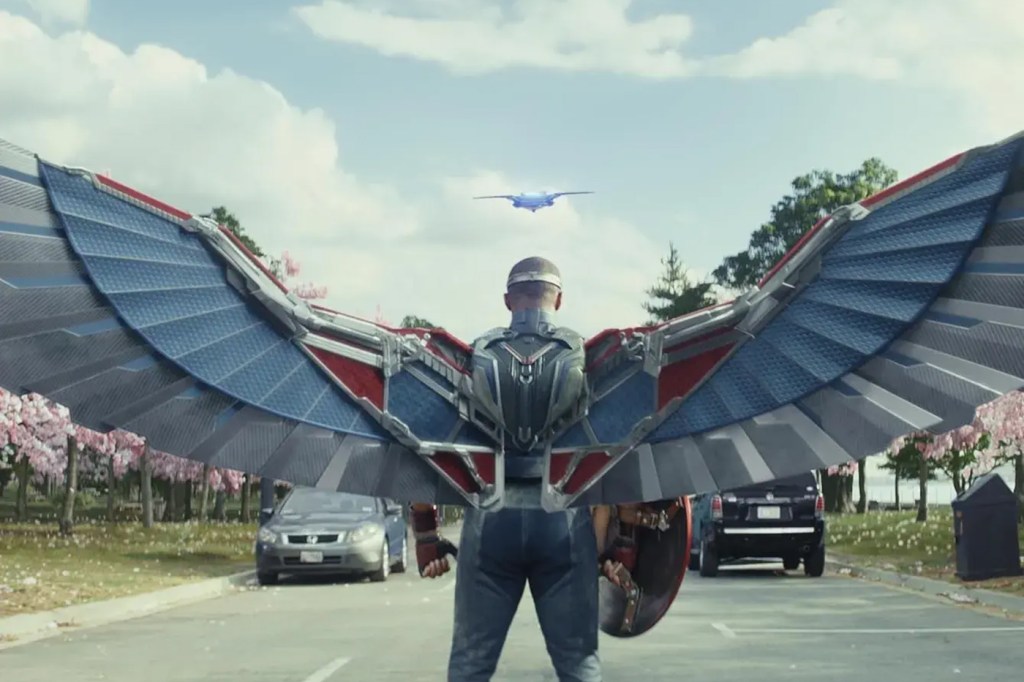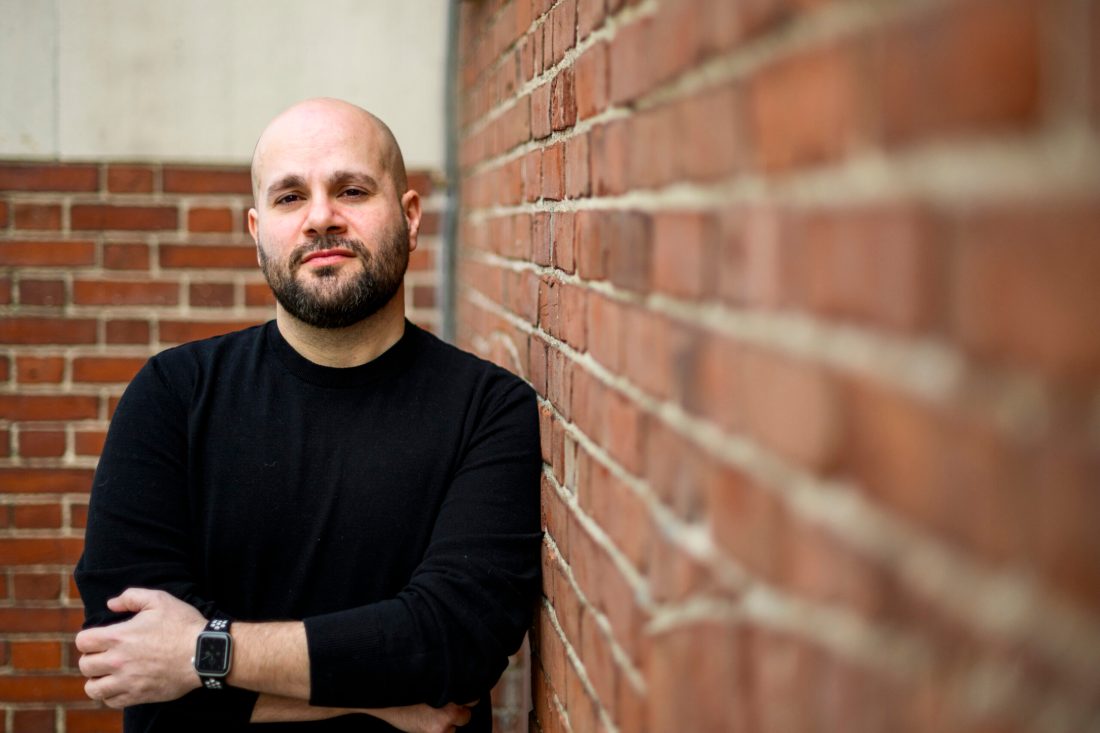‘Captain America: Brave New World’ is a “soft reset” for Marvel, expert says. Will it be enough to save Hollywood’s biggest franchise?
A Northeastern pop culture expert says the movie is designed to be a course correction in a franchise that, for more than a decade, could do no wrong in the eyes of fans.

“Captain America: Brave New World,” the 35th entry in the Marvel Cinematic Universe, comes at a make-or-break moment for Hollywood’s biggest franchise. As audiences grapple with superhero fatigue –– and Marvel Studios reels from the diminishing box office returns, with a few exceptions –– will “Brave New World” start a new era of Marvel dominance or mark another stage in its decline?
Steve Granelli, an associate teaching professor of communication studies at Northeastern University, who specializes in fandom and pop culture, says “Brave New World” is designed to be a course correction in a franchise that, for more than a decade, could do no wrong in the eyes of fans. The narrative around the MCU is very different coming into “Brave New World.”
“It’s a soft reset and ability to reestablish and introduce new characters and hopefully put storytelling on a different path than the perception of what Marvel has been on, which is ‘They don’t know what they’re doing,’” Granelli says.
Marvel Studios entered 2025 with the wind at its back after its R-rated hit “Deadpool & Wolverine,” but the studio’s place in Hollywood has never been shakier. In 2019, “Avengers: Endgame” pulled off the impossible, as threads from a decade of Marvel movies culminated in a largely satisfying conclusion to the MCU story thus far.
However, post-”Endgame,” Marvel has struggled to find its next big story. The studio has introduced heroes in movies and TV shows at a pace that even the most diehard fans struggled to keep up with –– or become invested in. Over the last six years, the strength of the MCU, the interconnected nature of its storytelling that kept audiences coming back for the next chapter in the story, has become its greatest liability. With so much content on TV and in theaters, it’s hard to tell what matters and what doesn’t in the larger narrative.
“People didn’t know what was required [viewing] or what wasn’t, and they would just assume everything was or everything wasn’t,” Granelli says. “Now all of a sudden there is a tiered system of content, and it’s almost like the people who were embracing it all couldn’t because there was so much of it and then if you were out on any one piece, maybe that meant you were out on all of it.”

It doesn’t help that Marvel had to scrap the villain that the entire next phase of the MCU was built on, Kang the Conqueror, after actor Jonathan Majors was arrested and found guilty on assault charges. In the aftermath of that decision, Marvel Studios retreated to familiar territory, bringing back Iron Man himself, Robert Downey Jr., to play fan-favorite villain Doctor Doom in the next Avengers film.
“[The MCU] is still a massive presence, but it doesn’t take up nearly as much bandwidth as it used to,” Granelli says. “It’s also fighting against a negative sentiment about the quality of their content for the first time in a while.”
After almost 20 years of putting superheroes on the big screen, Marvel Studios is at an “inflection point,” he says, “where they have to start telling new stories with new characters and drawing in new audiences” while maintaining the fanbase it has built up over 30-plus films.
The studio only released one film in 2024, “Deadpool & Wolverine,” but this year, three Marvel movies will hit the big screen: “Brave New World,” the antihero team-up “Thunderbolts*” and the long-awaited “The Fantastic Four: First Steps.”
Editor’s Picks
Granelli says Marvel’s 2025 film slate is evidence of a studio trying to have it both ways: pivoting back to what works while trying to stake out new ground.
“Brave New World,” which sees Steve Rogers’ sidekick Sam Wilson, aka The Falcon, picking up the shield and Captain America mantle, is one of the last vestiges of the old MCU. It thrusts a character fans know into a new position while trying to build up a new Avengers lineup.
“Thunderbolts*” brings together a cast of villains and antiheroes from previous Marvel movies and TV shows who don’t carry the audience baggage of a Captain America or Spider-Man. It has less pressure and fewer expectations attached. That means it can also afford to stand more on its own without years’ worth of MCU knowledge, potentially bringing in a wider audience that just wants to tune in for a fun action movie, Granelli says.
“Fantastic Four” might be the biggest of the three. It marks the entry of characters that fans have long been wanting to see in the MCU, but also serves as a jumping off point for new fans, introducing new characters, Marvel’s “first family,” in a retro-futuristic 1960s before the Avengers even exist.
Between the three, Marvel Studios seems to be acknowledging the gift and curse of the Hollywood model it created: an interconnected universe of films and TV shows that many others have tried and failed to replicate.
“Each one of those stories is being presented as if they are going to stand alone,” Granelli says. “Spoiler alert: They will not. … But the marketing is a nod to the audience to say, ‘Don’t worry. You don’t need to have watched 30 films to be able to understand these. You can drop in now.’”
That doesn’t mean Marvel is leaving behind the fanbase it’s built over the decades. Dropping the word “adamantium” into a trailer for “Brave New World” is a tantalizing hint for eager fans who want to see the long-awaited introduction of Wolverine and the X-Men into the MCU. But Granelli says films like “Brave New World” now need to prove their right to exist. The easter eggs and post-credit scenes that have long been part of Marvel’s signature, and tantalizing, “stay tuned” approach aren’t enough anymore.
“Anything that’s a Marvel project is going to get eyes to it, but there’s not this expectation of greatness that had been there for so long,” Granelli says. “They traded in all of those eyes that just showed up to something because it was Marvel. Now that’s not enough. They’ve got to tell good stories.”










